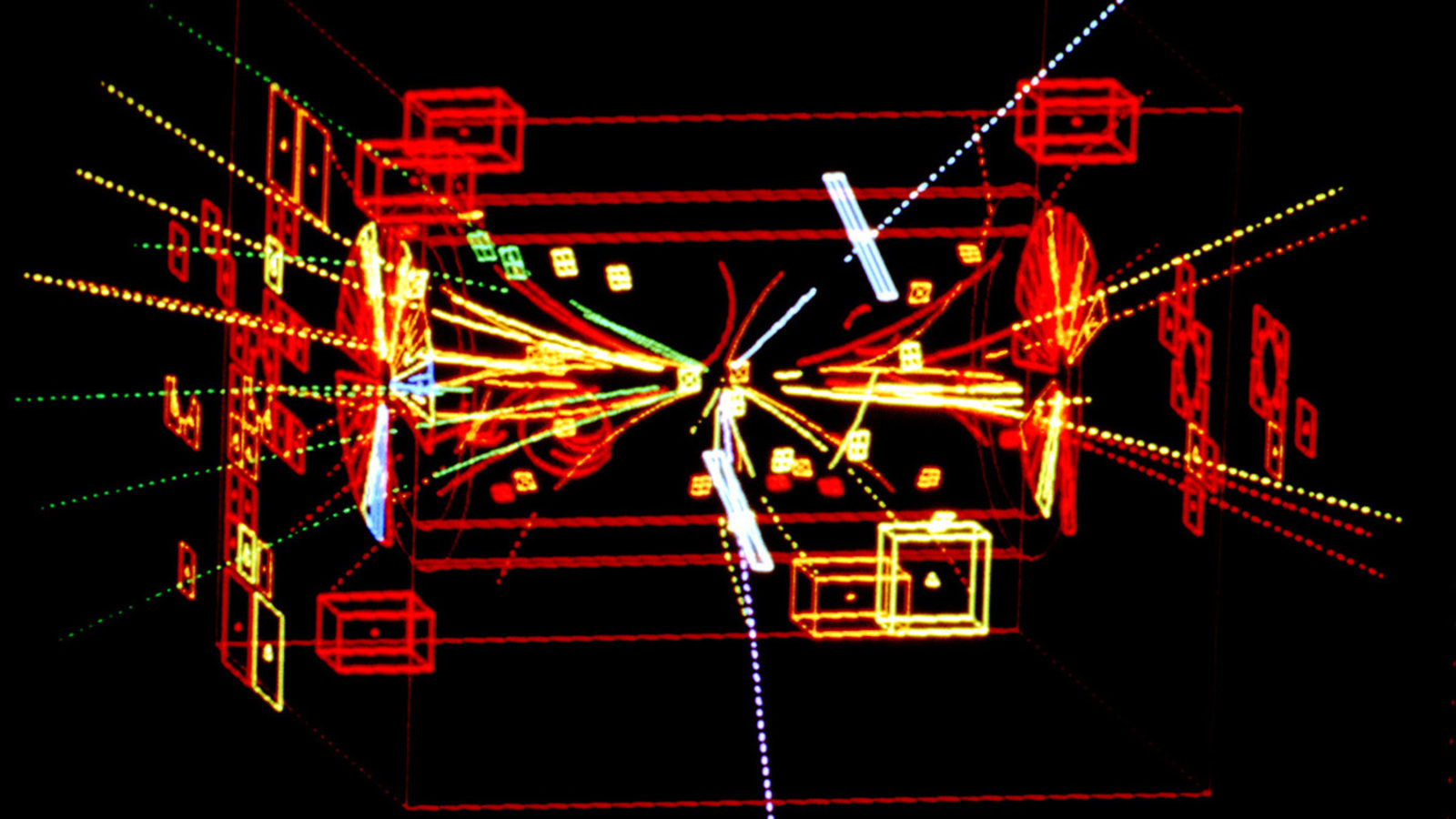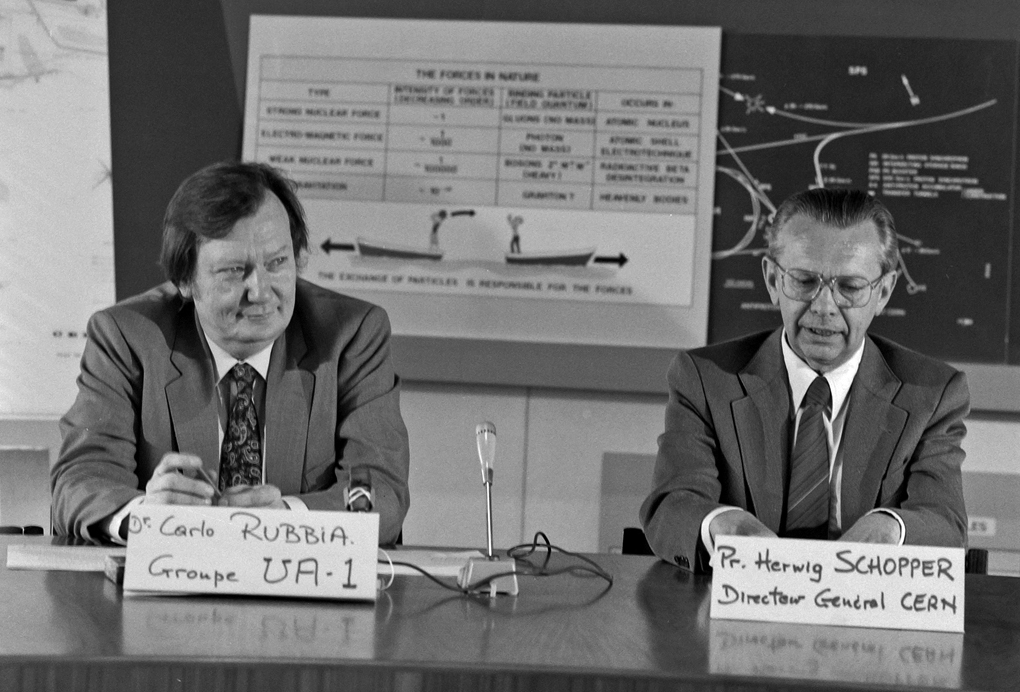On June 1, 1983, physicists at CERN's proton–antiproton collider called a press conference and made a long-awaited announcement: They had directly observed the Z boson. (One of the first Z-boson observations is shown in the image above.)
The discovery was greeted with both jubilation and sighs of relief as it confirmed the electroweak theory, a cornerstone of the Standard Model of particle physics upon which physicists had been relying for some time.
Just a few months previous, CERN researchers had announced the discovery of the W boson. Together, these two bosons carry the weak force, which is responsible for the radioactive decay of particles.
Despite its name, the weak force is actually one of the stronger fundamental forces, but its influence is limited by the large mass of the Z and W bosons. Their size caps the range of the weak force at about a quintillionth of a meter, and it becomes negligible beyond the radius of a single proton.
Enrico Fermi was the first to put forth a theory of the weak force in 1933, and Sheldon Lee Glashow, Abdus Salam and Steven Weinberg developed its present form in the 1960s when they proposed that the weak and electromagnetic forces are actually different manifestations of a single electroweak force.
After the initial discovery in 1983, scientists at Z-boson factories at CERN and SLAC National Accelerator Laboratory studied millions of the bosons in great detail.
The results supported electroweak theory and the Standard Model, increasing confidence in these descriptions of how the universe works.
The Z boson also turned out to be very important when it came time to search for the Standard Model’s missing piece: the Higgs boson.
When scientists announced in 2012 that they had observed a new particle consistent with the Higgs boson, they had not directly observed the Higgs—the Higgs decays far too quickly for that. Instead, they had observed the particles into which the Higgs decays, including the Z boson.
More time and analysis is needed to determine if the Higgs is exactly the type of Higgs predicted by the Standard Model. But the 1983 discovery of the elusive Z boson helped set the stage for this juncture.








